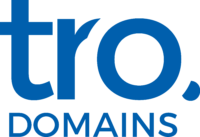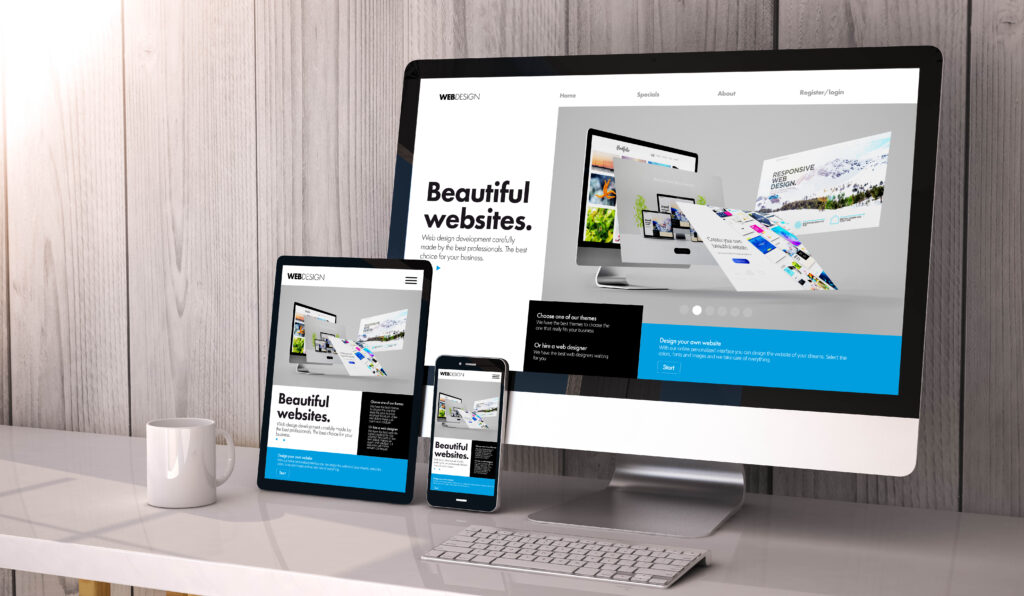Creating a Website
In the modern digital landscape, having a website is crucial for both individuals and businesses. A well-crafted website serves as a powerful tool for personal branding, business marketing, and even e-commerce. Despite what you might think, building a website doesn’t have to be a complicated or lengthy process. With the right tools at your disposal, you can create a professional-looking site quickly and efficiently.
Website Builder from trodomains.co.uk is designed to simplify the website creation process. Whether you are a beginner or have some experience, this tool offers an intuitive platform that caters to various needs. You can choose from a wide array of design templates tailored to different industries. These templates serve as a fantastic starting point, allowing you to focus on customising the design to suit your specific vision.
One of the significant advantages of using Website Builder is its user-friendly interface. The drag-and-drop functionality means you don’t need any coding knowledge to create an attractive and functional website. You can easily add text, images, videos, and other elements by simply dragging them to the desired location on your page. This approach not only saves time but also allows you to see your changes in real time.
As you embark on your website-building journey, it’s important to understand the various components that make up a website. These typically include a home page, an about page, a services or products page, a blog, and a contact page. The home page serves as the first impression for your visitors, so it should be visually appealing and provide a clear overview of what your site offers. The about page can give insight into your background or your company’s history, while the services or products page should clearly describe what you are offering.
A blog can be an excellent addition if you aim to engage your audience with regular updates, insights, or articles related to your field. It helps in establishing your authority on the subject matter and can also improve your site’s search engine ranking. The contact page should include various ways for visitors to reach you, such as a contact form, email address, phone number, and even social media links.
Customisation is another crucial aspect of website creation. Website Builder offers numerous options to tailor your site’s appearance. You can adjust the colour scheme, fonts, and layout to match your brand’s identity. Adding your logo and using consistent imagery can help in creating a cohesive and professional look.
It’s also essential to consider the functionality of your website. Depending on your needs, you might want features such as an online store, booking system, or interactive forms. Website Builder provides various widgets and add-ons that you can easily integrate into your site, enhancing its functionality without needing technical expertise.
The versatility of Website Builder makes it suitable for different types of websites, whether it’s a personal blog, a portfolio, a small business site, or a comprehensive online store. Each template and feature is designed to be flexible, allowing you to create a website that truly represents your unique vision.
Creating a website might seem like a significant task, but with tools like Website Builder, the process becomes much more manageable. The platform’s intuitive design and comprehensive features ensure that you can create a website that not only looks great but also functions effectively. Whether you’re looking to share your thoughts through a blog, showcase your work with a portfolio, or sell products online, Website Builder provides the resources you need to make your website a success.
Selecting the Appropriate Plan
When embarking on your website journey, choosing the right plan is crucial. Website Builder offers several options: Personal, Business, Business Plus, and Online Store. Each plan is tailored to different requirements and budgets.
The Personal plan is ideal for those who want to create a simple website or blog. It provides essential features without the frills, making it perfect for hobbyists or individuals.
The Business plan caters to small businesses looking to establish an online presence. It includes additional features such as advanced customisation options and enhanced support.
For businesses that need more robust capabilities, the Business Plus plan offers even greater functionality, including SEO tools and performance analytics.
Lastly, the Online Store plan is designed for e-commerce ventures. It includes features for managing products, payments, and shipping.
To select the plan that best suits your needs, consider your website’s purpose, the features you require, and your budget. Evaluating these factors will guide you to the most suitable choice.
Tailoring Your Website’s Design
Website Builder offers a variety of industry-specific templates to kick-start your design process. The first step in tailoring your website is to select a template that aligns closely with your brand’s vision and objectives. Each template is fully customisable, allowing you to modify colours, fonts, and layouts to better represent your unique identity.
Begin by reviewing the available templates and choosing one that best reflects your business or personal style. Consider the type of content you plan to showcase and select a template that supports this. For instance, a portfolio website may require a different layout compared to an online store or a blog.
Once you’ve chosen a template, you can start customising it to fit your brand’s aesthetic. Adjust the colour scheme to match your brand’s identity. Colours play a significant role in brand recognition and can influence how visitors perceive your website. Make sure the colours you choose are consistent with your existing brand materials, such as your logo and marketing collateral.
Fonts are another critical element in your website’s design. Select fonts that are not only visually appealing but also easy to read. Consistency in font usage across your website helps maintain a cohesive look and feel. Website Builder allows you to choose from a range of fonts, giving you the flexibility to find the perfect match for your brand.
Next, personalise the layout of your website. Move elements around, resize sections, and add new components to create a layout that best serves your content. Website Builder’s drag-and-drop functionality makes it easy to rearrange elements without any coding knowledge. This feature lets you experiment with different layouts until you find the one that best suits your needs.
Incorporate your logo and brand imagery into the design to further enhance your website’s identity. A well-placed logo helps visitors instantly recognise your brand. Use high-quality images that align with your brand’s message and values. Images can evoke emotions and set the tone for your website, so choose them wisely.
While customising the design, pay attention to the overall user experience. Ensure that your website is easy to navigate, with a clear structure and intuitive layout. Visitors should be able to find the information they’re looking for without any hassle. Use headings, subheadings, and bullet points to break up text and make it easier to read.
Adding multimedia elements like images, videos, and infographics can significantly enhance your website’s appeal. These elements can make your content more engaging and help convey your message more effectively. However, be mindful of the file sizes to ensure that your website loads quickly.
Website Builder also offers various widgets and add-ons that can enhance your website’s functionality. For example, you can add social media buttons to encourage visitors to connect with you on different platforms. Integrating features like contact forms, booking systems, or e-commerce functionalities can make your website more interactive and user-friendly.
Customisation isn’t limited to the desktop version of your site. Ensure that your design looks great on mobile devices as well. Website Builder’s responsive design capabilities automatically adjust your layout for different screen sizes, but it’s always good to preview your site on various devices to make sure everything appears as intended.
Lastly, don’t hesitate to use the preview feature to see how your changes look in real time. This allows you to fine-tune your design before publishing it live. Experiment with different elements and layouts until you’re satisfied with the overall look and feel of your website.
By taking the time to tailor your website’s design, you’ll create a more compelling and professional online presence that resonates with your audience.
Efficient Content Creation
Efficient Content Creation:
With your website’s design established, the next critical step is to focus on crafting compelling content. A well-structured content strategy is essential for engaging visitors and conveying your message effectively. Begin by organising your website’s content logically, ensuring that it is easy for visitors to navigate. Clear sections such as Home, About, Services, Blog, and Contact will provide a structured framework for your content.
When creating content, it’s vital to keep your audience in mind. Tailor your writing to resonate with your target readers, using language that is clear, concise, and engaging. Consider what information your audience is seeking and how best to present it. Breaking down complex information into easily digestible sections can enhance readability and maintain your audience’s interest.
Start with your homepage, as this is often the first impression visitors will have of your site. Your homepage should provide a succinct overview of your website’s purpose and guide visitors to other sections. Use compelling headlines and subheadings to draw attention to key areas and ensure that your text is easy to scan.
The About page is an opportunity to share your story and connect with your audience on a personal level. Whether it’s your personal journey or the history of your business, this section should build trust and authenticity. Use this space to highlight your unique strengths, values, and what sets you apart from others.
For the Services or Products page, focus on clearly describing what you offer. Use straightforward language to outline the benefits of your services or products and how they can address the needs of your audience. Including customer testimonials or case studies can provide social proof and enhance credibility.
A Blog section can serve multiple purposes. It allows you to share insights, updates, and valuable information related to your field, helping to establish you as an authority. Regularly updating your blog with fresh content can also improve your site’s search engine rankings. When writing blog posts, aim for a mix of evergreen content—timeless information that remains relevant—and timely posts that address current trends or news.
Ensure that your Contact page is straightforward and provides multiple ways for visitors to get in touch. Include a contact form, email address, phone number, and links to your social media profiles. Make it as easy as possible for your audience to reach you.
To enhance engagement, incorporate multimedia elements throughout your website. High-quality images, videos, and infographics can make your content more appealing and help convey your message more effectively. For instance, a video introduction on your homepage can provide a more dynamic and personal touch, while infographics can simplify complex information into visual formats that are easier to understand.
When adding multimedia, be mindful of file sizes to ensure that your website loads quickly. Slow-loading pages can frustrate visitors and negatively impact your search engine rankings. Optimise images and videos for the web to maintain a balance between quality and performance.
Internal linking is another important aspect of content creation. Linking to other relevant pages within your website can improve navigation and help visitors discover more of your content. It also aids in SEO by establishing a clear site structure and distributing page authority.
Pay attention to the use of keywords in your content. Conduct keyword research to identify terms that your audience is likely to search for, and incorporate these keywords naturally into your text. Avoid keyword stuffing, as it can make your content difficult to read and may be penalised by search engines. Focus on creating valuable, informative content that naturally includes relevant keywords.
Lastly, consider accessibility when creating content. Ensure that your website is usable for people with disabilities by following web accessibility guidelines. Use descriptive alt text for images, provide captions for videos, and ensure that your site is navigable using a keyboard. Creating accessible content not only broadens your audience but also demonstrates a commitment to inclusivity.
By focusing on these elements, you can create engaging, informative, and accessible content that enhances the overall user experience and supports your website’s goals.
Enhancing for Mobile and Search Engines
In today’s digital age, ensuring your website is accessible on all devices is imperative. With a significant number of users accessing websites via smartphones and tablets, a mobile-friendly design is no longer optional; it’s essential. A responsive design adapts seamlessly to different screen sizes, providing an optimal viewing experience regardless of the device being used. Website Builder inherently supports responsive design, adjusting your site’s layout automatically to suit various screen dimensions.
However, beyond relying on the automatic adjustments, there are specific steps you can take to enhance mobile usability. First, ensure your site loads quickly on mobile devices. Compressing images and minimising the use of large files can significantly reduce load times. Mobile users are often on the go and may not have the patience to wait for slow-loading pages. Speed is critical, not only for user experience but also for search engine rankings.
Navigational simplicity is another crucial factor. Mobile screens are smaller, so your navigation menu should be easy to access and use. Consider implementing a hamburger menu, which condenses the navigation options into a single icon that expands when clicked. This keeps your layout clean and uncluttered while providing easy access to all sections of your site.
Touchscreen functionality should also be considered. Buttons and links should be large enough to tap easily without zooming in. Spacing between interactive elements should be adequate to prevent accidental clicks, which can frustrate users and drive them away.
While optimising for mobile, it’s also vital to enhance your site for search engines. Start by conducting thorough keyword research to identify the terms your target audience is likely to use when searching for your content. Incorporate these keywords naturally throughout your website, including in headings, subheadings, and body text. Keywords should flow naturally within the content to avoid keyword stuffing, which can be detrimental to both readability and SEO.
Meta tags, titles, and descriptions are crucial elements that help search engines understand the content of your pages. Ensure each page has a unique and descriptive title that includes relevant keywords. Meta descriptions should be concise summaries of your page content, encouraging users to click through from search engine results.
Another effective SEO strategy is to create a clear and logical site structure. Organise your content in a way that is easy for both users and search engines to navigate. Internal linking helps distribute page authority across your site, improving the visibility of individual pages. Linking related content also keeps visitors on your site longer, which can positively impact your search engine rankings.
Alt text for images is another important consideration. Descriptive alt text not only aids in SEO but also improves accessibility for visually impaired users who rely on screen readers. Ensure that every image on your site includes alt text that accurately describes its content.
Regularly updating your content is essential for maintaining and improving your search engine rankings. Search engines favour websites that provide fresh, relevant content. Whether it’s through new blog posts, updated product descriptions, or timely news articles, keeping your site current can help it stay competitive in search engine results.
Lastly, consider leveraging local SEO if your business has a physical presence. Include your business name, address, and phone number on your website, and ensure these details are consistent across all online platforms. Registering your business with online directories and Google My Business can also improve your local search visibility.
By focusing on these elements, you can enhance both the mobile usability and search engine optimisation of your website, ultimately providing a better experience for your visitors and improving your site’s visibility.
Launching and Overseeing Your Website
Launching your website is an exciting milestone, but it’s crucial to ensure everything is in order before going live. Start by conducting a comprehensive review of your site to confirm that all elements function correctly. Check for broken links, verify that images and videos load properly, and ensure that interactive features such as forms and buttons work seamlessly. Testing your site on various devices and browsers will help you identify and resolve any compatibility issues.
Once your site is live, the work doesn’t stop there. Effective website management involves regular updates and continuous improvement to keep your site relevant and engaging. Updating your content frequently is vital for maintaining visitor interest and improving your search engine rankings. This could involve adding new blog posts, updating service or product information, and incorporating the latest industry news.
Monitoring your website’s performance is another key aspect of ongoing management. Use analytics tools to track visitor behaviour, such as page views, bounce rates, and average time spent on your site. These insights can help you understand what’s working well and identify areas that may need enhancement. For example, if you notice that visitors are leaving your site quickly, it might indicate that your content isn’t engaging enough or that your site’s navigation could be improved.
Security is another critical component of website oversight. Regularly update your software and plugins to protect your site from vulnerabilities. Implementing strong passwords and using security tools can further safeguard your site against potential threats. If you’re running an online store, ensure that payment gateways are secure and comply with data protection regulations.
Engaging with your audience is also essential for a successful website. Encourage visitors to leave comments on your blog posts or provide feedback through contact forms. Responding promptly to enquiries and comments can help build a loyal audience and improve user satisfaction.
It’s beneficial to periodically review and refine your SEO strategies. This includes checking for broken links, updating meta descriptions, and ensuring that your keywords remain relevant. A well-optimised website not only ranks higher in search engine results but also provides a better user experience.
Social media integration can further enhance your website’s reach. Promoting your content on social media platforms can drive more traffic to your site and increase engagement. Ensure that your social media links are prominently displayed and consider adding sharing buttons to your blog posts and other content.
Consider performing regular audits to assess your website’s overall performance. This can help you identify outdated content, slow-loading pages, and other areas that may require improvement. Use the insights gained from these audits to make informed decisions about future updates and enhancements.
In summary, launching your website is just the beginning. Regular maintenance, continuous content updates, performance monitoring, and audience engagement are all essential components of successful website management. By staying proactive and attentive to your site’s needs, you can ensure it remains a valuable asset for your personal or business endeavours.



